To jackinnj : If is showed voltage cca 600 mV p-p, is " ringing " ( nice word ) only a few mV. Related to cca 30 V DC, is " ringing disturbing " cca 80 dB below. If we take from PSRR worse value, for example 50 dB, will be " penetration coefficient " of this disturbing cca 130 dB below signal, more than 10 dB below noise of this circuit. Maybe some guys listen music like signal from Cassini, by corelation method, but it is not my case 😎 .
Upupa, what do you say about 11.2 V?
But anyway, yes, the noise signal level generated is always much lower than the output, though nicely present. Something like noise floor modulation, let's say -70, -80 dB down?
But anyway, yes, the noise signal level generated is always much lower than the output, though nicely present. Something like noise floor modulation, let's say -70, -80 dB down?
Hi all!
Excuse me, if I talk too much, but I have felt the need to complete the previous tests.
Here it is the same [~] setup with MUR860. The transformer, capacitor, load is the same. The reverse recovery "snap" with this rectifier is much less, but not inexistent.
Excuse me, if I talk too much, but I have felt the need to complete the previous tests.
Here it is the same [~] setup with MUR860. The transformer, capacitor, load is the same. The reverse recovery "snap" with this rectifier is much less, but not inexistent.
Attachments
Konnichiwa,
Am I interpreting the display right and is the MUR860 recovery snap a single well damped spike of shorter duration and around 20db less amplitude as that with conventional rectifiers?
If so this has at least the potential to make an audible difference, IMHO.
Also, again me badgering you to do my own work, sorry for that, could you try out some standard rectifiers vs schottky diodes tests?
Thanks to your excellent work this thread has already been hugely illuminating and educating, more please....
Sayonara
Joseph K said:Excuse me, if I talk too much, but I have felt the need to complete the previous tests.
Here it is the same [~] setup with MUR860. The transformer, capacitor, load is the same. The reverse recovery "snap" with this rectifier is much less, but not inexistent.
Am I interpreting the display right and is the MUR860 recovery snap a single well damped spike of shorter duration and around 20db less amplitude as that with conventional rectifiers?
If so this has at least the potential to make an audible difference, IMHO.
Also, again me badgering you to do my own work, sorry for that, could you try out some standard rectifiers vs schottky diodes tests?
Thanks to your excellent work this thread has already been hugely illuminating and educating, more please....
Sayonara
here it is the same thing again, with a larger time scale. Here I resolved the problem of the "sniffer", it is sniffing really now [a HP filter]. It permits to see better the things going on. What you see is that at the "plateau" phase there is no noise, because the low impedance of the cap is attached, but in between, there is no damping of the input tank circuit, it is free to pick up noise, resonate, etc..
Attachments
I would like to make it clear, in these test we were not looking at the charge current pulses. We were looking at the ~ 35 V p-p AC sec. voltage, and at the glitches, what the diodes reverse rec. current spike is causing on them.
These glitches are having a quite widespread noise spectrum. I would like to attach here a graph to have the impression. The reference level in this graph is a bit hazy - first, I am sniffing the sec. AC tension, it is shaping this noise in the low region. i did not calculate precisely, but the F3 of the 10nF // 50 ohm setup is in the range of ~ 200 kHz. I must do it, so as not to overload the analyser input. So, it all is only a relative test, to show the spectral distribution.
[of the 11.2 V spikes]
These glitches are having a quite widespread noise spectrum. I would like to attach here a graph to have the impression. The reference level in this graph is a bit hazy - first, I am sniffing the sec. AC tension, it is shaping this noise in the low region. i did not calculate precisely, but the F3 of the 10nF // 50 ohm setup is in the range of ~ 200 kHz. I must do it, so as not to overload the analyser input. So, it all is only a relative test, to show the spectral distribution.
[of the 11.2 V spikes]
Attachments
Hi, Thorsten!
Look out, the time scale is different. It seems to be that the MUR has a much smaller, BUT longer snap [~30 usec]
So, it is not a bad thing at all.
Look out, the time scale is different. It seems to be that the MUR has a much smaller, BUT longer snap [~30 usec]
So, it is not a bad thing at all.
And yes, I will continue on, anyway, I have my classic GC with 2200 uF & schottky diodes sitting there waiting for a debut.. no, i am joking, I will put the schottkys in this same setup.
Khm, maybe one thing - my schottkys will die at this tension & current..
I will look into it!
And here a pic, the same setup [with the 11.2 V spikes], but the snubber [220nF - 1ohm] across the cap.
It is different, but try too look at it in "averaging mode". That is, for me it is generally the same pic. At each new scan the spectrum is different, but it moves around the ~ same values. In case of real changes, the "mean" values are changing, greatly.
Khm, maybe one thing - my schottkys will die at this tension & current..
I will look into it!
And here a pic, the same setup [with the 11.2 V spikes], but the snubber [220nF - 1ohm] across the cap.
It is different, but try too look at it in "averaging mode". That is, for me it is generally the same pic. At each new scan the spectrum is different, but it moves around the ~ same values. In case of real changes, the "mean" values are changing, greatly.
Attachments
Take two aspirins and go to bed now, but in the morning measure the inductance of the transformer secondary with the primary leads shorted. Also measure the primary to secondary capacitance -- so we can look at the tank circuit.
Joseph K said:Hi all!
Excuse me, if I talk too much...
Please talk! 😀 😀 😀 😀
Go on...
Konnichiwa,
Okay, yes I was wondering. The pictures don't quite make the scales easy to infer.
And yes, I agree that less leve and a longer decay are both good things as it means much less energy higher up, lower Q and of course overall 20db lower peaks.
As for the schottkies, i nowadays always keep bagsfull of 100V/3A ones around.... Easy & Cheap to get.
Sayonara
Joseph K said:Look out, the time scale is different. It seems to be that the MUR has a much smaller, BUT longer snap [~30 usec]
So, it is not a bad thing at all.
Okay, yes I was wondering. The pictures don't quite make the scales easy to infer.
And yes, I agree that less leve and a longer decay are both good things as it means much less energy higher up, lower Q and of course overall 20db lower peaks.
As for the schottkies, i nowadays always keep bagsfull of 100V/3A ones around.... Easy & Cheap to get.
Sayonara
Please talk! 😀 😀 😀 😀
Go on...
No kidding! It's like... like... well, I have no clue what most of this means, but I still know it's air of the freshest type. 🙂
I read most of this thread, and I had to post this...
I tried the s thing and I am very happy with it. It just so happens I built 4 identical mono 3886 amps which sounded "identical"
I decided to change two of them adding the s and then listened again. The difference was there right from the beginning, and time gone since, just added some more of it. For the better, believe it or not
I feel just sick to see all those guys denying this can change the sound. I don't understand how it works, and neither do they, but at least I tried and I can hear by myself it works.
I am so sick of all this conservatorism, people who think they know it all... wake up guys, wake up, try it, hear it and then try to find what it does so that you will finally get peace
maybe I shouldn't have posted this, but seeing lots of useless posts by guys who didn't even test it...
I tried the s thing and I am very happy with it. It just so happens I built 4 identical mono 3886 amps which sounded "identical"
I decided to change two of them adding the s and then listened again. The difference was there right from the beginning, and time gone since, just added some more of it. For the better, believe it or not
I feel just sick to see all those guys denying this can change the sound. I don't understand how it works, and neither do they, but at least I tried and I can hear by myself it works.
I am so sick of all this conservatorism, people who think they know it all... wake up guys, wake up, try it, hear it and then try to find what it does so that you will finally get peace
maybe I shouldn't have posted this, but seeing lots of useless posts by guys who didn't even test it...

- Status
- Not open for further replies.
- Home
- Amplifiers
- Chip Amps
- Carlos' snubberized Gainclone Power supply
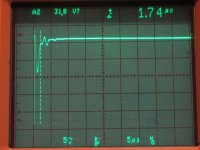
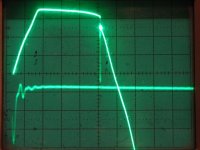

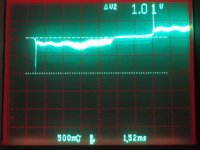
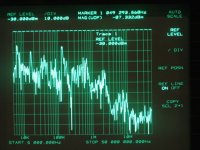
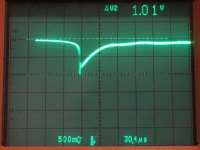

 That is for me a big reason to go DIY.
That is for me a big reason to go DIY.